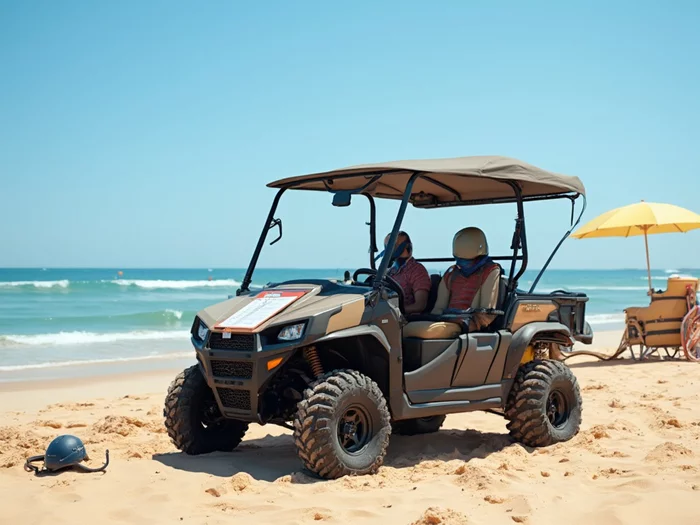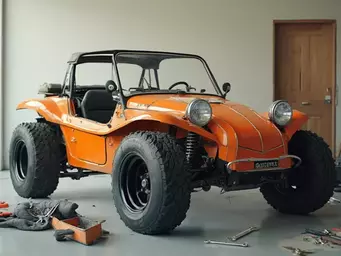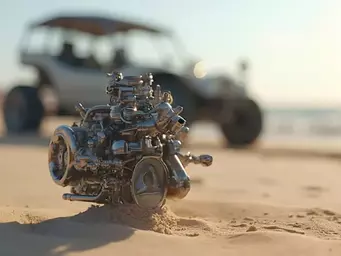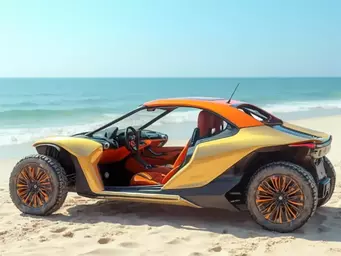LH5: Structural Integrity & Performance
- Focus on chassis strength and durability.
- Ensures vehicle can handle off-road conditions.
- Key for long-term reliability.
Get the latest beach buggy build guides, restoration tips, and performance upgrades delivered directly to you.
Posted on: 2025-10-13
By: Jasper Quinn
What if building your dream beach buggy could also ensure safety and compliance? Understanding the crucial regulations and standards is the key!
Understanding the key aspects of compliance codes LH5 and LH6 is vital for building a safe and legal beach buggy in Australia. This visual breaks down their focus areas and the essential components required for adherence.
Building your own beach buggy in Australia is not just about the thrill of customization; it’s also about adhering to specific regulations that ensure safety and compliance. Understanding the compliance codes LH5 and LH6 is crucial for any builder looking to hit the sandy shores confidently.
These codes outline the necessary standards for beach buggies, affecting everything from structural integrity to safety features. Ignoring these regulations could lead to significant issues down the line, including registration problems or unsafe driving conditions.
The LH5 and LH6 codes are essential in guiding the construction and modification of beach buggies. They focus on ensuring that vehicles are built with safety and durability in mind, specifically tailored for the unique conditions of Australian roads and coastlines.
By prioritizing these codes during the construction process, you’re not only ensuring your beach buggy is roadworthy but also that it’s built to last under the rigorous demands of off-road driving.
The Australian Design Rules (ADR) set forth the basic requirements for vehicles used in Australia, including beach buggies. These rules cover a wide range of factors, including performance, safety, and emissions standards, and they play a vital role in the building process.
Familiarizing yourself with the ADR is a must for any builder. This knowledge will keep your project on the right track and provide peace of mind as you navigate the regulations.
The chassis and body of your beach buggy are foundational elements that must meet specific criteria to comply with safety standards. A lightweight and durable chassis is key—many builders opt for a Volkswagen chassis due to its proven history in off-road performance.
Choosing the right chassis and body material is not just a matter of preference; it plays a significant role in meeting compliance and ensuring your beach buggy can withstand the elements.
When it comes to compliance, having a thorough checklist can be your best friend. Here’s a simple guide to help you ensure that your beach buggy meets all necessary standards:
This checklist can help streamline your building process and minimize any potential compliance hiccups. Remember, taking the extra time to do things right will pay off in the long run!
The materials you choose for your beach buggy construction can significantly influence compliance with safety regulations. For instance, using high-quality fiberglass can enhance the buggy's durability and performance while keeping it lightweight.
By carefully selecting your construction materials, you can enhance both the performance of your beach buggy and its compliance with necessary regulations. It’s all about finding the right balance!
When selecting materials for your beach buggy, consider the environmental impact. Opt for sustainable options like recycled aluminum or eco-friendly fiberglass. Not only does this enhance your buggy's performance, but it also contributes to a cleaner beach environment, aligning with Australia’s commitment to sustainability.
LH5 focuses on the structural integrity and performance of the chassis, ensuring it can handle off-road conditions and offers long-term reliability. LH6 addresses safety features and compliance, covering essential safety measures like seatbelts and roll cages, which facilitates vehicle registration and can lead to better insurance coverage.
ADR are crucial because they set the basic requirements for vehicles in Australia, including performance, safety, and emissions standards. Adhering to ADR ensures your beach buggy is equipped to handle terrains, incorporates necessary safety features, and meets environmental standards, making it roadworthy and compliant.
Many builders opt for a Volkswagen chassis, such as those from a VW Beetle, due to its proven history in off-road performance, strength, and compatibility with safety regulations. The key is to choose a chassis that is lightweight, durable, and can be reinforced at stress points for enhanced safety.
High-quality fiberglass is popular for its lightweight and versatility. Steel provides durability but adds weight, so balance is crucial. Aluminum is also an excellent choice due to its lightweight properties and resistance to corrosion, which is ideal for coastal environments. The selection should aim for durability, performance, and compliance with safety regulations.
To ensure compliance, you should thoroughly review LH5 and LH6 codes, use approved construction materials for the chassis and body, incorporate essential safety features (like seatbelts and roll cages), verify all components meet ADR requirements, and conduct a final inspection with an authorized certifier. Documenting modifications and engaging with professionals can also streamline the process.
As we come to the conclusion of our exploration into building compliant beach buggies, it's important to reflect on the significance of adhering to compliance codes like LH5 and LH6. These codes not only ensure that your buggy is roadworthy but also prioritize safety for you and others on the road. It's vital to keep these regulations at the forefront of your build process—your future adventures depend on it!
In my journey with Beach Buggy Builders, I've seen firsthand how attention to compliance can transform a hobby into a passion backed by legal assurance. Remember, it’s not just about how your buggy looks; it’s about how it performs and adheres to Australian safety standards.
By following these guidelines and ensuring compliance, you’ll not only enhance your beach buggy's performance but also make your build a source of pride and safety. Always keep in mind that a compliant vehicle is a dependable vehicle!
At Beach Buggy Builders, we encourage all builders to take a proactive approach toward compliance. There’s no shame in seeking help or advice from professionals. Engaging with experienced builders or automotive workshops can offer insights that save time and resources in the long run.
Additionally, consider joining local communities of beach buggy enthusiasts. Sharing experiences and learning from others often leads to better practices and can keep you informed about the latest compliance updates!
Ready to dive into building your beach buggy? Here are some valuable resources to help you along the way:
Utilizing these resources can help you understand the ins and outs of building your buggy, ensuring it’s both compliant and safe for the roads!
Getting your beach buggy on the road isn’t just about construction; you’ll need to navigate the registration and insurance landscape too. Here’s a simple checklist to guide you:
Following this process will help you secure your beach buggy's spot on the road, setting you up for countless adventures ahead. Let’s hit the beach and make some unforgettable memories!

 What if every turn of the wrench not only transformed your beach buggy but also deepened your passio
What if every turn of the wrench not only transformed your beach buggy but also deepened your passio
 Upgrading your beach buggy isn't just about power—it's a journey towards better performance and en
Upgrading your beach buggy isn't just about power—it's a journey towards better performance and en
 Have you ever felt the thrill of cruising along the shore in a custom beach buggy, the sun warming y
Have you ever felt the thrill of cruising along the shore in a custom beach buggy, the sun warming y